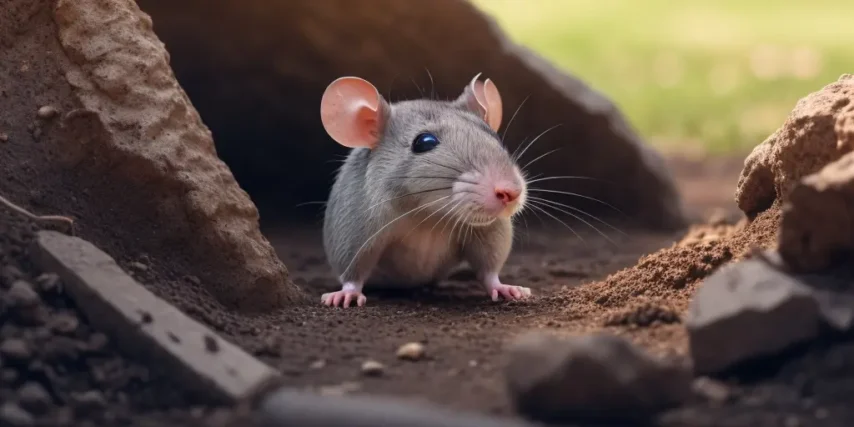Unearthing the Secrets: The Art of Soil Excavation by Mice
In the intricate world of nature, every creature, no matter how small, plays a vital role in maintaining the delicate balance of ecosystems. One such creature that often goes unnoticed in its significant contribution to soil health is the humble mouse. Mice, with their dainty paws and unassuming demeanor, possess a remarkable ability to dig through soil, creating burrows that serve both as their homes and as agents of environmental influence. In this article, we will delve into the fascinating realm of how mice dig soil, exploring the intricate techniques and adaptations that make them soil engineers in their own right.
The Anatomy of Soil-Digging Mice:
To understand how mice dig through soil, it’s essential to first examine the unique features of their anatomy that facilitate this process. Mice possess specialized limbs and claws that are adapted for burrowing. Their front limbs are equipped with sharp, curved claws that function like miniature shovels, allowing them to efficiently break through the soil. These claws are well-suited for the dual purpose of excavation and creating intricate tunnel systems.

Furthermore, the compact and streamlined bodies of mice provide them with agility and maneuverability, enabling them to navigate through the soil with ease. Their keen sense of touch, aided by sensitive whiskers, helps them navigate in the dark, narrow confines of their subterranean world. All these adaptations collectively contribute to their prowess as skilled soil diggers.
Purposeful Excavation:
Mice engage in soil excavation for various reasons, each serving a crucial purpose in their survival and the broader ecosystem. One primary motivation is the creation of burrows for shelter and protection against predators. These burrows, often consisting of a complex network of tunnels and chambers, serve as a safe haven where mice can nest, raise their young, and escape adverse weather conditions.
Moreover, the act of digging itself has ecological implications. The disturbance caused by mice burrowing helps aerate the soil, promoting better water infiltration and nutrient distribution. This activity enhances the overall health of the soil, making it more conducive to the growth of vegetation and providing habitat for other soil-dwelling organisms.
The Ingenious Techniques:
Mice employ a combination of techniques to excavate soil efficiently. One notable method involves a combination of scratching and kicking, where the mouse uses its forelimbs to scratch away loose soil and its hind limbs to kick the excavated material behind it. This rhythmic and coordinated motion allows them to create tunnels and chambers with remarkable speed and precision.
In addition to physical digging, mice also utilize their incisors, constantly growing front teeth, to gnaw through roots and small obstacles in the soil. This not only aids in the excavation process but also provides a food source for the mice. Their resourcefulness in utilizing natural materials for construction, such as leaves and twigs, adds another layer of complexity to their burrowing activities.

Environmental Impact:
While mice primarily engage in soil excavation for their own survival, the consequences of their actions extend beyond their immediate surroundings. The intricate tunnel systems they create enhance soil structure, allowing for better water retention and drainage. This, in turn, benefits plant growth and overall ecosystem health.
Moreover, the disturbance caused by mice digging can promote the germination of seeds and the establishment of diverse plant species. The increased biodiversity resulting from their activities contributes to the overall resilience of ecosystems. In this way, mice indirectly shape the landscape and influence the dynamics of their environment.
Conservation Implications:
Understanding the role of mice in soil excavation has significant implications for conservation efforts. The delicate balance between predator and prey, as well as the intricate relationships between soil-dwelling organisms, underscores the importance of preserving natural habitats. Conservation initiatives should take into account the ecological roles of seemingly inconspicuous creatures like mice, recognizing their contribution to the overall health of ecosystems.

Conclusion:
In the intricate dance of nature, even the smallest performers play crucial roles. The unassuming mouse, with its adept soil-digging abilities, exemplifies the interconnectedness of all living beings. By unraveling the secrets of how mice dig through soil, we gain a deeper appreciation for the intricate web of life and the impact that these seemingly simple actions can have on the broader ecosystem.
As we delve into the underground world of soil excavation by mice, we not only uncover the remarkable adaptations that enable them to thrive but also recognize the far-reaching consequences of their activities. From creating shelter to enhancing soil health and fostering biodiversity, mice emerge as unsung heroes in the intricate tapestry of nature. It is a testament to the beauty of the natural world that even the tiniest creatures can leave a lasting impact on the landscapes they inhabit.







